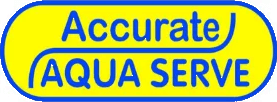FAQ
Colorado Water Testing & Treatment Facts
What about Final Barrier in water safety? Click here: Final Barrier
Click here: Water Treatment for Dummies
How does a water softener work?
A water softener device uses ion exchange to reduce the hardness by replacing magnesium and calcium (Mg2+ and Ca2+) with sodium or potassium ions (Na+ and K+). Ion exchange resins are organic polymers containing anionic functional groups to which the di-cations (Ca++) bind more strongly than mono-cations (Na+). Inorganic materials called zeolites also exhibit ion-exchange properties. These materials are used in some dish machine detergents. Regeneration of ion exchange resins takes place when most of the Na+ (or K ) ions have been replaced by calcium or magnesium ions, the resin must be refreshed by purging the Ca2+ and Mg2+ ions using a solution of sodium chloride or potassium chloride. The waste waters washed from the ion exchange column containing the unwanted calcium and magnesium salts are typically discharged to a sewer system.
What about water testing?
Every month your local health department receives hundreds of requests for advice about drinking water safety. Many people want to do the right thing and make sure that their water is safe. Chances are that your water is just fine, but you can’t tell by just looking, smelling, or tasting. Testing is the first and most important step for any home or business owner concerned about water quality- Especially for those using well water.
What tests are available?
A water specialist will be happy to come to your home or business to conduct a basic water test and plumbing audit at no charge. If more advanced testing is required many additional tests can be obtained for a nominal charge. These include, but are not limited to: coliform bacteria, arsenic, lead, fluoride, nitrates, radon, and uranium.
How safe is my water?
Most community water suppliers deliver high quality drinking water to millions of Americans every day. Of the more than 55,000 Community Water Systems in the United States, only 4,769 (8.6%) reported a violation of one or more drinking water health standards in 1996.Nationwide, drinking water systems have spent hundreds of billions of dollars to build drinking water treatment and distribution systems. An additional $22 billion per year is spent on operating and maintaining them. In 1997, additional monies became available to upgrade drinking water systems and implement local source water protection activities.
In addition, there is a network of government agencies whose job is to ensure that public water supplies are safe. Nonetheless, problems with local drinking water can, and do, occur.
What problems can occur?
As development in our modern society increases, there are growing numbers of threats that could contaminate drinking water. Suburban sprawl has encroached upon once pristine watersheds, bringing with it all of the by-products of our modern life style. Actual events of serious drinking water contamination occur infrequently, and typically not at levels posing near-term health concern. Nonetheless, with the threats of such events increasing, we cannot take drinking water safety for granted. Greater vigilance by you, your water supplier, and your government is vital to ensure that such events do not occur in your water supply.
Where does my water come from?
Drinking water comes from surface water and ground water. Large-scale water supply systems tend to rely on surface water resources, and smaller water systems tend to use ground water. Including the approximately 23 million Americans who use ground water as a private drinking water source, slightly more than half of the population receives its drinking water from ground water sources. Surface water includes rivers, lakes, and reservoirs. Ground water is pumped from wells that are drilled into aquifers. Aquifers are geologic formations that contain water. The quantity of water in an aquifer and the water produced by a well depend on the nature of the rock, sand, or soil in the aquifer where the well withdraws water. Drinking water wells may be shallow (50 feet or less) or deep (more than 1,000 feet). Your water utility or your public works department can tell you the source of your public drinking water supply.
How does the city treat my water to make it safe?
Water suppliers use a variety of treatment processes to remove contaminants from drinking water. These individual processes may be arranged into a “treatment train” to remove undesirable contaminants from the water. The most commonly used processes include filtration, flocculation and sedimentation, and disinfection. Some treatment trains also include ion exchange and adsorption. A typical water treatment plant would have only the combination of processes needed to treat the contaminants in the source water used by the facility. If you want to know what types of treatment are used for your water supply, contact your local water supplier or public works department.
Where can I get more information about my water?
Information on water quality in your area is available from several sources, including your local public health department and your water supplier. You can determine whom to contact by checking your water bill or by calling your local town hall. State agencies also can provide extensive information on your water supply and its quality. Each state has a department responsible for drinking water quality.
EPA maintains general water resources information at its headquarters and in its 10 regional offices. Other groups, such as environmental organizations, also may be able to provide information.
How do I sanitize my well that has been impacted by flood waters?
Since the recent floods in Colorado the biological safety of those with wells were in question. One of the first step to consider after the flood levels have receded is to disinfect the well with a step by step chlorination if your well is suspect. The short form procedure entails adding bleach to the well, circulating, feed forward into all home outlets, contact time period, flush period and validating test. If you would like more information call 303-469-7873 or 303-HOW-PURE.

